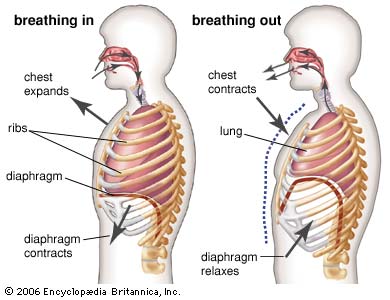Over a long term of doing fitness and keeping active, the body becomes alot stronger; Muscles get bigger so breaths get deeper to get more oxygen into those muscles and the bones become stronger to support the muscles and eachother as they become more dense.
CardiovascularLong term affects make the heart get bigger
and stronger because that too is a muscle. The stroke volume of the heart increases
because it's much stronger than before which means it is more powerful and can pump blood around the body alot faster and get the ocygen to where it needs to be.
MusculoskeletalBones are made up of 4 different layers; articular cartlidge; cancellous (spongey bone); cpmpact bone and bone marrow. The compact bone is the layer on the
outside and the cancellous bone and bone marrow are on the inside. The more you
excercise, the more dense your bones become, which makes them less likely to
shatter or break of an accident were to occur e.g getting kicked in the shin during a football game.
RespiratoryThe muscles between your ribs are called
'intercostal' muscles and beneath the ribs their is a long muscle going
horizontally called the 'diaphragm.' When you breath in your inter-costal muscles
and diaphragm expand. Because more exercise is being done bigger breaths need to be taken so the diaphragm has to expand even more.
When you excercise over a long period of time, your body begins to adapt to the daily excercises. For example, if a person decides to take up jogging then this is what will happen:
Day 1: Go for the first jog, last 10 minutes before becoming weak and out of breath
Day 2-5: Lasted 10 minutes, breathing more steady
Day 6-10: lasted 20 minutes, breathing more steady not as weak
Day 11-20: Lsted 30 minutes, not tired not weak
Every day that the person jogged the muscles in the legs teared and repaired making them bigger and stronger, because the muscles were getting bigger and stronger the heart rate needs to increase so it can take in more o2 to the muscles. Because the muscles have become alot bigger the bones also need to get stronger to support them so they become more dense.
 The lactic acid system is capable of releasing energy to restore the ATP without the involvement of oxygen and is called anaerobic glycolysis. (breakdown of the glucose which causes lactic acid as a biproduct)
The lactic acid system is capable of releasing energy to restore the ATP without the involvement of oxygen and is called anaerobic glycolysis. (breakdown of the glucose which causes lactic acid as a biproduct)
